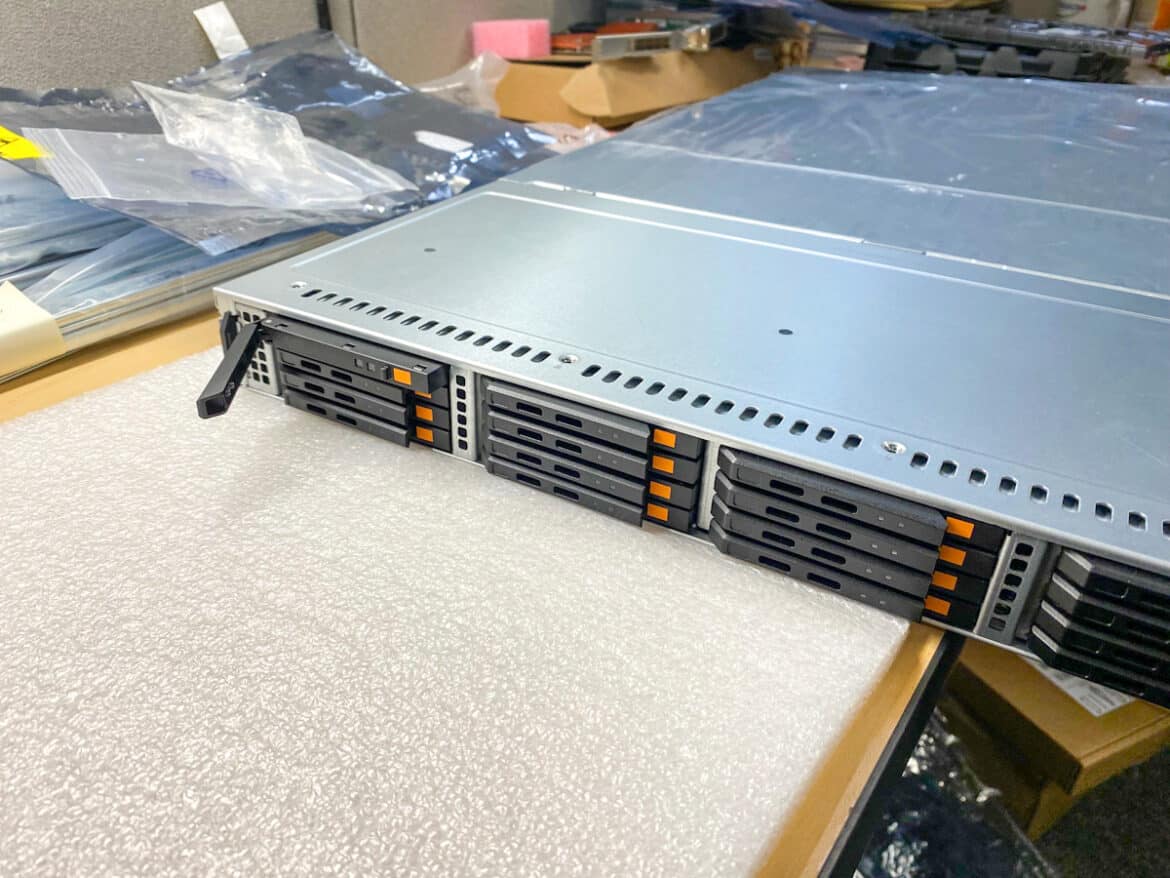Supermicro has announced the latest addition to its high-performance, high-density petascale class all-flash NVMe server family. The company has expanded its storage solutions portfolio for intensive I/O workloads by introducing all-flash servers utilizing Gen5 EDSFF E3.S SSDs across multiple product lines. EDSFF isn’t new to Supermicro; they were one of the first to release commercial servers with E1.S SSDs several years ago.
Supermicro has announced the latest addition to its high-performance, high-density petascale class all-flash NVMe server family. The company has expanded its storage solutions portfolio for intensive I/O workloads by introducing all-flash servers utilizing Gen5 EDSFF E3.S SSDs across multiple product lines. EDSFF isn’t new to Supermicro; they were one of the first to release commercial servers with E1.S SSDs several years ago.
Supermicro supports both Intel and AMD CPU offerings in this update, giving customers SSD-dense offerings in both flavors. On the Intel side, servers are powered by dual 4th Gen Intel Xeon Scalable processors up to 270W TDP and contain up to 32 DIMMs of DDR5-4800MHz memory, for a total of 8TB of memory. SSD support will come in the full-fledged Gen5 x4 configuration. The two-processor Intel boxes will be the favored configuration from Supermicro for the most intensive compute and storage workloads.
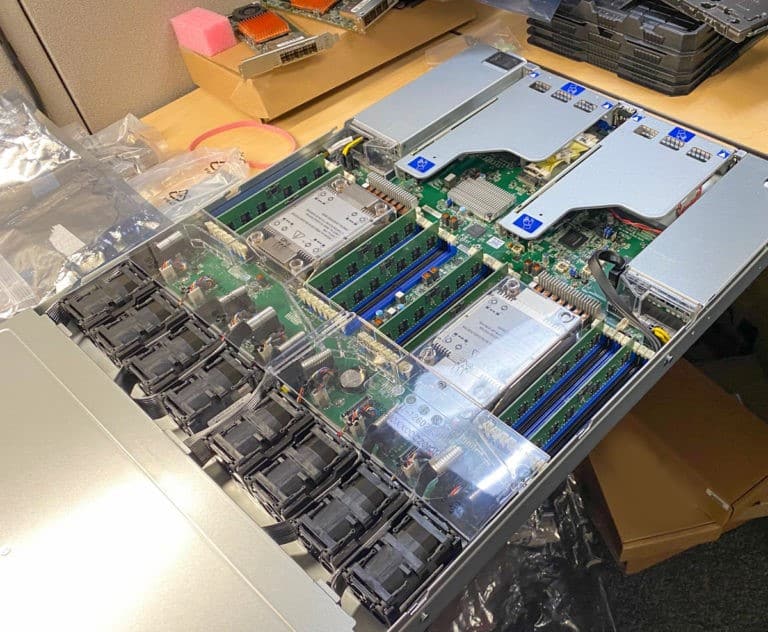
AMD servers are driven by 4th Gen AMD EPYC processors and offer single-processor configurations with up to 350W TDP and 24 DIMMs of DDR5-4800MHz memory. These systems are designed for applications that can take advantage of all the cores AMD Genoa CPUs have to offer in a more cost-optimized configuration. Supermicro will support Gen5 SSDs here as well but in the x2 configuration.
All of the systems have two full-height, half-length PCIe Gen5 x16 slots that support accelerator cards. Two additional Supermicro PCIe Gen5 x16 AIOM (Advanced I/O Module) slots provide enhanced field serviceability and plug-in compatibility with a broad spectrum of off-the-shelf OCP 3.0 networking cards.
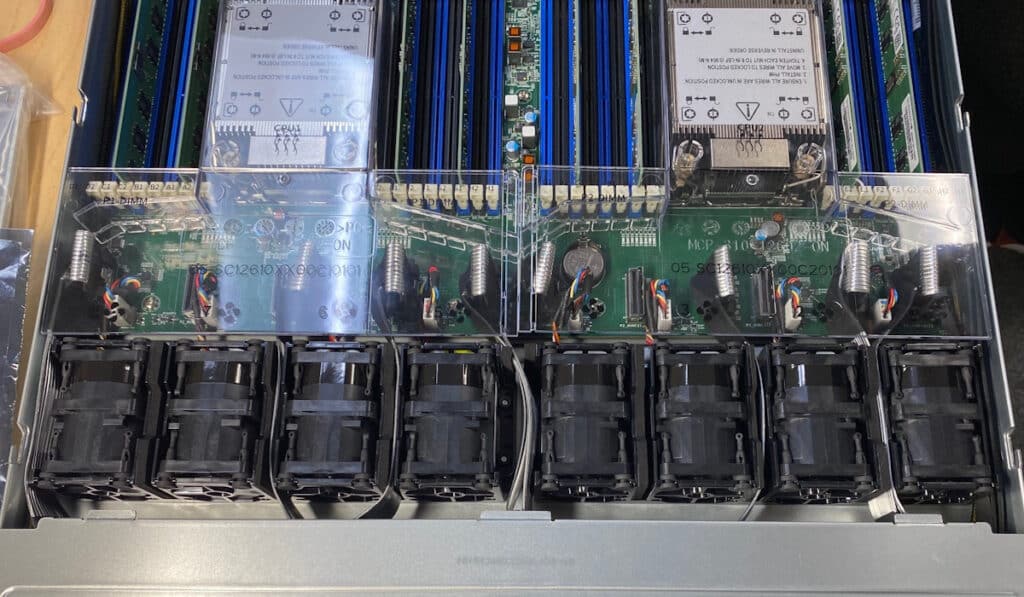
At launch, Supermicro will support a 1U 16 E3.S SSD configuration for both AMD and Intel. At some point in the future, they’ll add 2U systems which can support 32 SSDs. On the E1.S side of the house, Supermicro will offer a single 1U, 24-drive system based on Intel.
| CPU | Server Model | Form Factor | Storage Bays | Storage Type |
|---|---|---|---|---|
| 2X Intel | SSG-121E-NE316R | 1U | 16 | E3.S |
| 2X Intel | SSG-221E-NE324R | 2U | 32 | E3.S |
| 2X Intel | SSG-121E-NES24R | 1U | 24 | E1.S |
| 1X AMD | ASG-1115S-NE316R | 1U | 16 | E3.S |
| 1X AMD | ASG-2115S-NE332R | 2U | 32 | E3.S |
With more fast SSDs, balancing the system becomes more important. Supermicro has an all-new NUMA-balanced, symmetrical architecture that reduces latency by providing the shortest signal paths to the drives, a balance of bandwidth to the storage, and flexible networking options. Critically, the symmetrical design also facilitates smooth airflow over the entire system, allowing the use of more powerful processors.
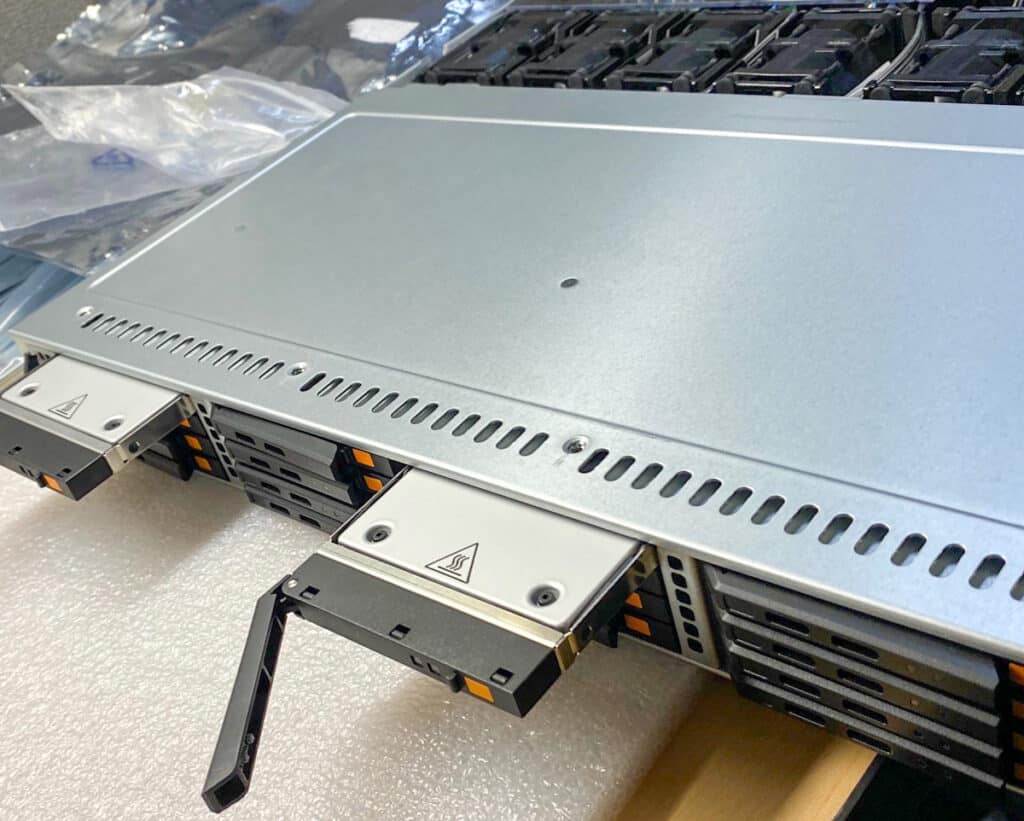
Market Impact
We’re seeing the move to EDSFF from U.2 in storage-heavy servers as important, but it’s also slow-moving. Part of the reason comes down to SSD availability, and there are precious few Gen5 E3.S or E1.S SSDs even available today. We’ve got a small batch of Samsung PM1743 SSDs in the lab; they appear to be the early leaders in shipping Gen5 x4 EDSFF drives.
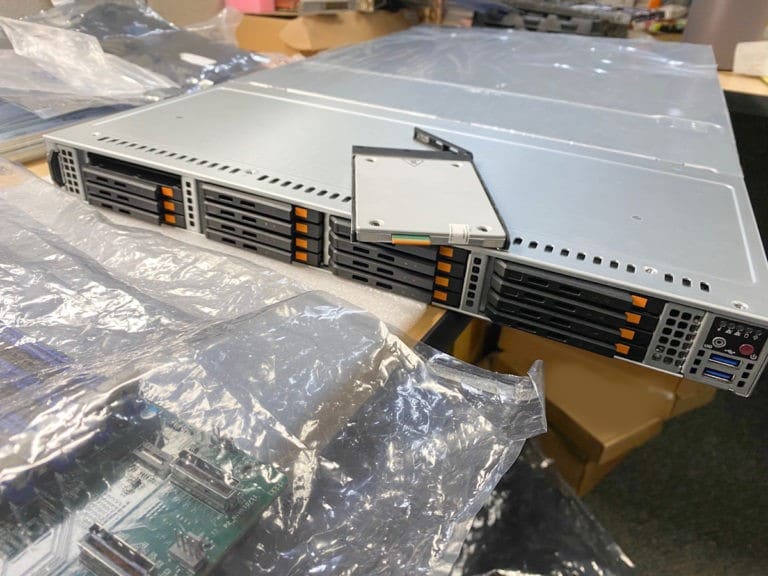
The other issue comes down to the cooling of these systems. When deploying servers “full” with 16 SSDs across the front of a 1U server or 32 SSDs in a 2U server, incoming airflow is restricted, meaning server designers like Supermicro absolutely must prioritize cooling to the CPUs. We look forward to seeing the improvements Supermicro has deployed in these servers to handle these concerns.
With the new CPUs from Intel and AMD, coupled with the potential Gen5 SSDs offer and the i/O requirements to get data in and out, the infrastructure landscape is changing quickly. Now more than ever, customers must understand their applications and the balance between CPU and storage resources in any of these 4th gen Intel or AMD systems.
Engage with StorageReview
Newsletter | YouTube | Podcast iTunes/Spotify | Instagram | Twitter | TikTok | RSS Feed

